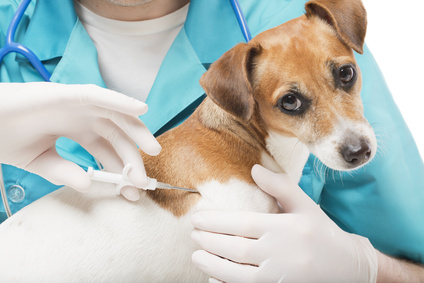
Cancer has tumors. Infections have high white blood counts. The hepatocutaneous syndrome that Joey has doesn’t have clear red flags that establish without a doubt what his condition is. Should we do a biopsy?
Good veterinarians want the most complete information they can get before starting treatment. A biopsy may add information to the mix and may rule out certain possibilities. Is it essential?
It depends.
I’m not a veterinarian, and my dog Joey’s situation is a single case that may not resemble any other dog’s situation. Here was my thinking when his vet suggested a biopsy was a next step to consider.
What is a biopsy?
A biopsy removes a small amount of tissue to check under a microscope for signs of disease. It can be done during surgery or using a small needle guided by ultrasound. Samples may be taken from one or several locations, depending on the circumstances.
Under a microscope, the sample may show the wildly growing cells of cancer, viral or bacterial infections, hepatitis, parasites, reactions to toxins or other diseases.
A biopsy can rule out some diseases. It doesn’t always pinpoint the cause of a condition.
Why do it?
I asked the following questions as I mulled over whether to do a biopsy or not:
- What would it tell us that we don’t already know?
- How will it affect treatment going forward?
- How will the biopsy itself affect Joey?
Joey’s internal medicine vet, a solemn, careful and caring physician, pointed out that the ultrasound, blood work and physical examination have all pointed to a sick liver, but they don’t tell us why his liver is sick. Finding the cause would allow her to focus treatment more precisely.
Joey’s abdominal ultrasound showed no signs of either liver or pancreatic tumors. In fact, except for the honeycomb appearance of his liver, his organs looked normal.
It a biopsy revealed he had cancer not seen on the ultrasound, I already knew that I wouldn’t aggressively treat it at this stage of his life.
As I’ve eavesdropped in vet offices or talked to friends with dogs, I’ve developed a growing commitment to making Joey’s last years peaceful. I don’t want the end of his life filled with panic and invasive procedures.
He has a long-standing heart murmur. At this point, he’s at least 13 years old and even the most successful procedure isn’t going to make him immortal.
The recommended treatment for hepatocutaneous syndrome is weekly intravenous infusions of amino acids for four weeks. The flow of amino acids, the building blocks of protein, will help his body compensate for the deficiency of proteins due to his sick liver.
It doesn’t require sedation, although each infusion takes a full day, and is benign even if there are other issues going on that we haven’t identified. It doesn’t cure the condition nor will it help Joey live longer. In about 40 percent of dogs having it, there’s no change in the condition. But it might help reverse the damage or slow it down, thus improving his quality of life.
The final element I had to consider was what the biopsy itself would do to Joey. The process is invasive and would require him to be sedated. Because of his heart murmur, he might have needed disgnostic heart studies before undergoing the procedure. The cost of doing the biopsy could easily be more than $1,000 — an expense that would take funds away from paying for treatment itself.
As much as we’d like to think that doing one more thing will give us the magic data for making decisions and planning treatment, a biopsy might add nothing.
For better or worse, I decided to save Joey the trauma of the biopsy and to proceed with the amino acid infusions.